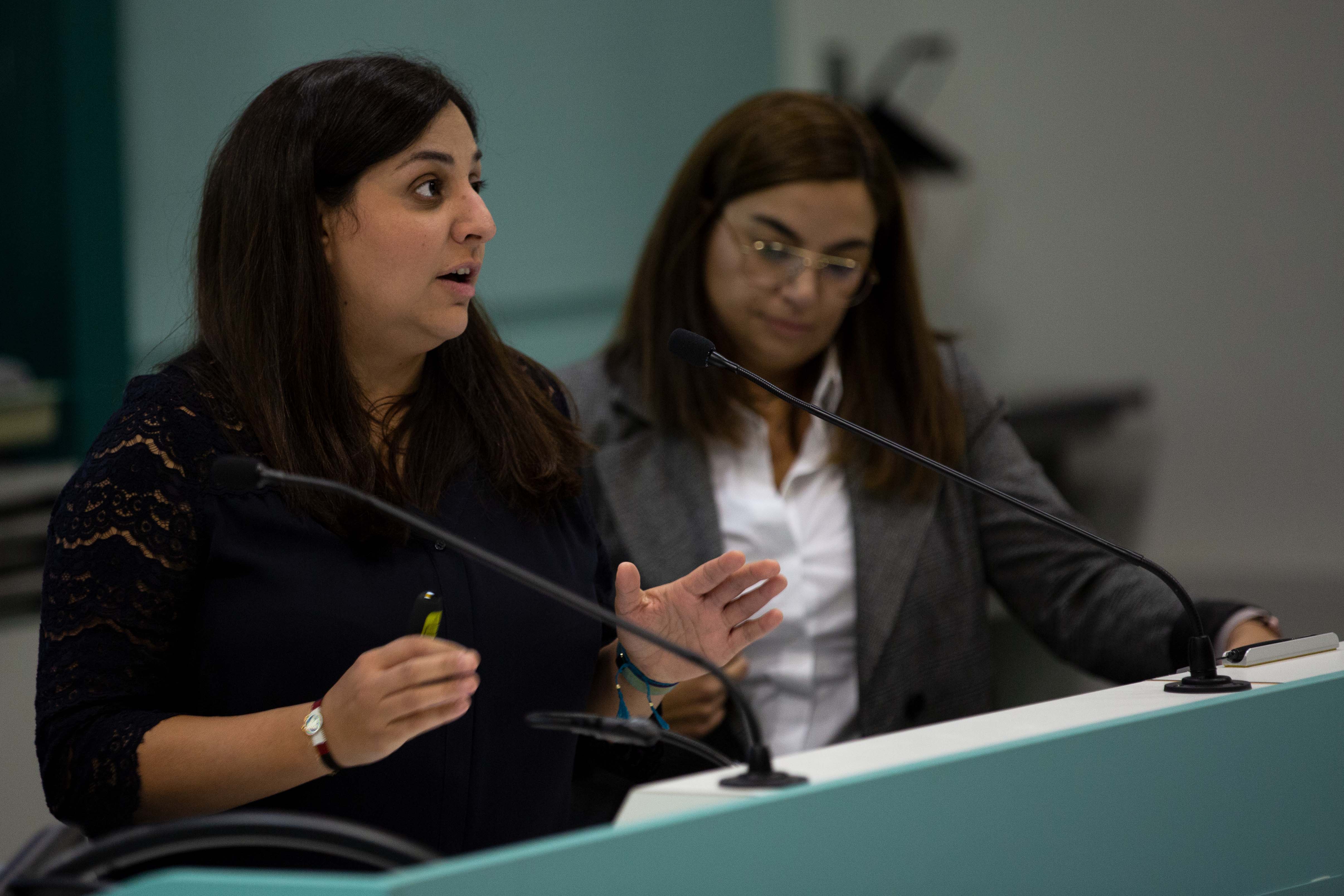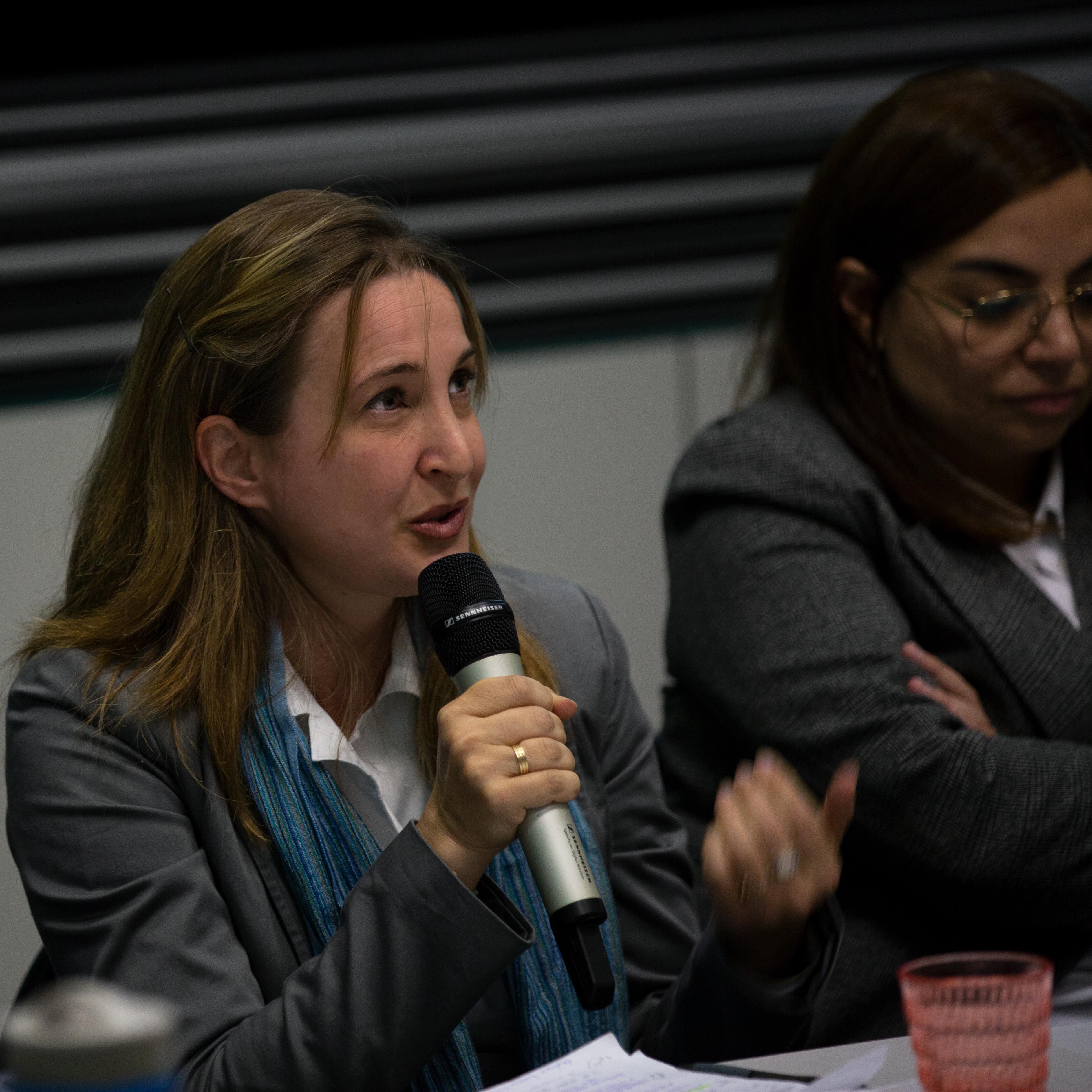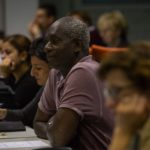Geneva, October 2019, Philip H. D. Smith

At international tribunals interpreters speak – in the first person – for all the parties. Reliving atrocity and brutality repeatedly as a case unfolds inevitably takes its toll.
International tribunals are now part of the international scene. We see the accused being hustled into buildings, get some view of the courtroom and sometimes watch an interview with a prosecutor. Although most tribunals operate with more than one language the interpreters are almost invisible.
As part of the exhibition “One Trial – Four Languages: Who were the simultaneous interpreters at the Nuremberg Trials” a fascinating panel discussion took place on 3rd October 2019. Its title was “Interpreting in Court – tested to the limit” and it brought together a number of conference interpreters who work at the main international tribunals as well as in national courts.
Moderator:
Rebecca Van Horck, freelance conference interpreter and AIIC member.

Speakers:
- Jocelyne Baaklini, Officer in Charge of the interpretation unit at the Special Tribunal for Lebanon
- Rouba Romanos, staff interpreter at the Special Tribunal for Lebanon
- José Kukulu Luwa, staff interpreter at the International Criminal Court
- Justine Ndongo-Keller, former head of language services, International Criminal Tribunal for Rwanda
- Cindy Barbara, staff interpreter at United Nations Geneva and former staff member of the Extraordinary Chambers in the Courts of Cambodia
- Kia Deschamps, retired interpreter of the International Criminal Tribunal for the former Yugoslavia
- Christiane Driesen, coordinator of AIIC Legal Interpreting Committee, freelance interpreter at the International Tribunal for the Law of the Sea and at national courts

Although the situations differed because of the languages, the underlying conflict, the countries and continents, there were marked similarities in the reports and analysis of central issues.
Working at such legal proceedings brings its particular challenges, for example:
The cases use western legal procedures and terminology, so how do you translate this into languages were such concepts do not exist?
The interpreters have to work from languages with a different structure that do not move readily into a European language. Question: was he a friend of yours. Answer: I did not go to his nephew’s wedding, i.e. he is not a close friend.
Q: When did this event take place? A: In the lobster season (this referred to crayfish in a local lake).
People may not describe location as left or right or have the same way of describing distance. Some cultures do not name the days of the week in a way recognisable in western culture, and hence in western courtrooms.
Witnesses may well be known to the families of the accused and hence vulnerable to threats. One method for protecting witnesses is for the interpreters to receive an altered voice, so that if any sound bleeds from the headset of the interpreters into their microphone and thus the live broadcast the witness will not be recognisable. This is done via a distortion box.

The stress on the interpreters is enormous and unremitting. The charges are for horrific crimes, so the interpreters have to translate testimonies that involve murder, rape, torture and utter disdain for human life and values. And the interpreter has to relate these facts when discussed by each party: the accused, the witness, the prosecutor, the defence lawyer, the judge. And each time the interpreter works in the first person, i.e. embodies the actual events: I raped her, I killed her children; I saw the rape, I saw the children’s murder, I deny that a rape took place, I did not see any children. The interpreter channels the atrocity from multiple sources.
In addition to witness statements the interpreters also watch films of the atrocities, often of people who are first tormented and then killed, all recorded in all its vivid atrocity.
As the case builds the picture emerges of a grandfather murdering his grandchildren because their mother is from a different tribe; people who hand family member to the mob, high on blood lust; perpetrators testify to slitting throats, disembowelling victims, murdering pregnant women.

This builds to immense pressure on the interpreters, who suffer what is now called vicarious trauma which results in stress and insomnia. Some seek solace in alcohol. Marriages come under terrible strain, indeed some break under the pressure. People’s relationship with their children is affected. Family life is the price that the interpreter pays.
As yet there is no clear good practice in providing support for the interpreters who do such work and suffer the concomitant stress. There is what might be called “peer support” but no clear help structure. Perhaps the reason for this is that as yet little research has been done on secondary trauma. Anyone who attended this eye-opening moving session would conclude that there is a genuine and clear need.
Photo gallery – Pictures of the round table evening












